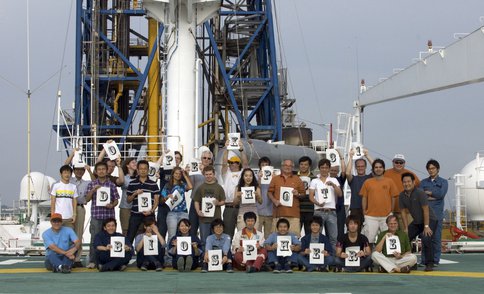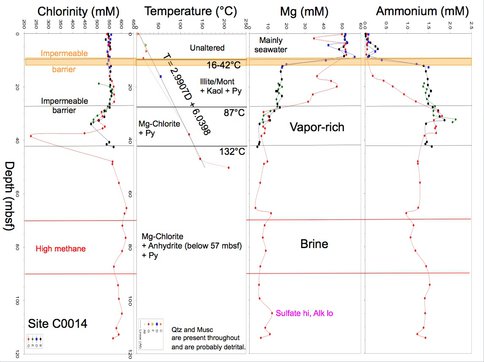2010 Annual Science Report
 University of Hawaii, Manoa
Reporting | SEP 2009 – AUG 2010
University of Hawaii, Manoa
Reporting | SEP 2009 – AUG 2010
The Deep Hot Biosphere: Expedition 331 of the Integrated Ocean Drilling Program (IODP)
Project Summary
Hydrothermal systems on the seafloor, and their associated submarine hot springs, are one of the leading candidates for the setting in which life originated on planet Earth some 4 billion years ago. Today these systems are known to harbor active and diverse communities of microbes, both bacteria and archaea, which thrive on the high temperatures and the abundant sources of chemical energy supplied by reduced chemical species generated from magma and by water-rock reactions within the hydrothermal system. From September 1 through October 4, 2010, we drilled into an active high-temperature hydrothermal system in the Okinawa Trough, an actively rifting back-arc basin that lies in a transitional region between continental and oceanic crust, northwest of the island of Okinawa in the western Pacific Ocean. The objectives of this drilling were to investigate microbial communities with the hydrothermal system and their geochemical and geophysical setting.
Project Progress
Team member M. Mottl was the Co-Chief Scientist on the Japanese drilling ship the Chikyu for Expedition 331, the Deep Hot Biosphere”, with drilled in the Okinawa trough starting in late August. The Preliminary Report for this project is just now being completed and will be submitted at the end of November. A first draft of the Expedition Report is also complete; a final draft will be produced by early March, 2011. Five sites were drilled on the Expedition, including one at a site of vigorous discharge of altered seawater at a temperature of 311°C. The other four sites were drilled at increasing distance from the discharge site, to a maximum of 1.5 km. These five sites provide insight into the structure and dynamics of the hydrothermal system, including the presence of a large reservoir of hot water in the subseafloor and lateral flow from a distal site of recharge of cold seawater into the system to the site of discharge. We documented the presence of several distinct types of microbial communities, some of which were cultured onboard. Much more work will be done on these communities over the next three years in shore-based laboratories.
Shipboard photo of the scientific staff of Expedition 331 of the Integrated Ocean Drilling Program (IODP), the Deep Hot Biosphere project, which drilled a high-temperature hydrothermal system in the Okinawa Trough during the period Sept. 1-Oct. 4, 2010. Mike Mottl of the UH NAI was Co-Chief Scientist. Also onboard were microbiologists Christopher House of the Penn State NAI and Hilairy Hartnett of the Arizona State NAI.
Chlorinity, temperature, Mg, and ammonium depth profiles in seven holes
drilled at IODP Site C0014, 450 m SE of a set of vigorous high-temperature
(311oC) hydrothermal vents in the Iheya North hydrothermal field, mid
Okinawa Trough. Two impermeable barriers (hydrothermal cap rocks) separate
hydrothermal flow into vertical compartments, containing largely unaltered
seawater (0-9 m below sea floor), altered seawater (12-27 mbsf), vapor-rich
hydrothermal fluid (27-42 mbsf), and brine (48 mbsf to the deepest sample at
114 mbsf). The upper part of the hole is within the temperature range of
meso- and hyper-thermophilic microbes.
-
PROJECT INVESTIGATORS:
-
RELATED OBJECTIVES:
Objective 5.3
Biochemical adaptation to extreme environments
Objective 7.1
Biosignatures to be sought in Solar System materials


